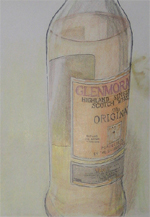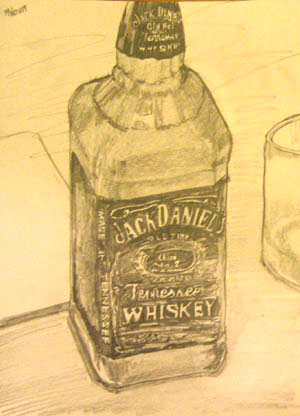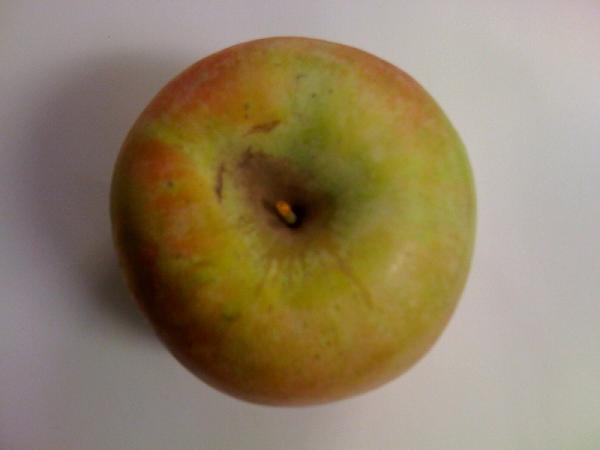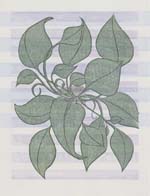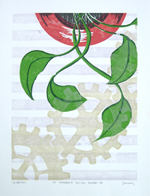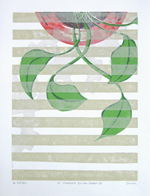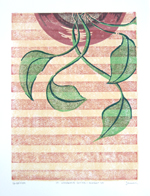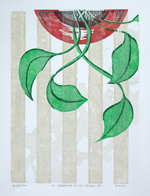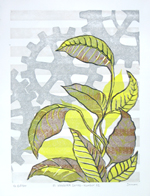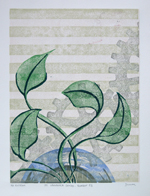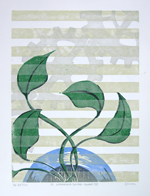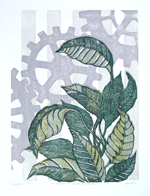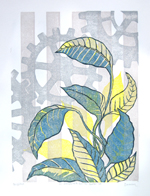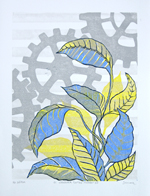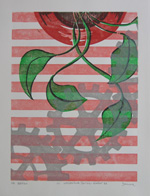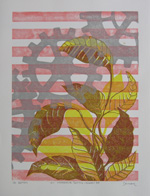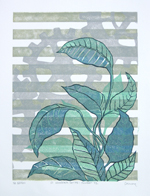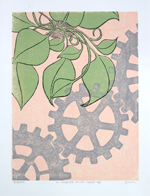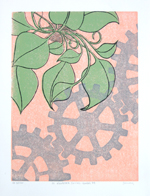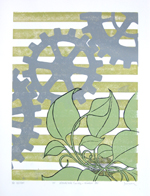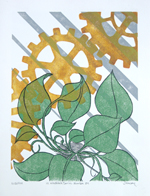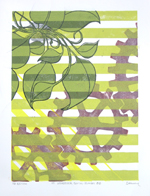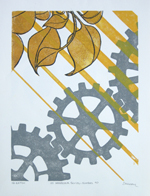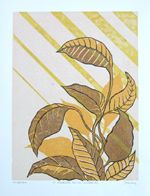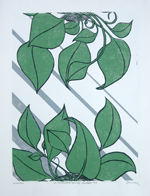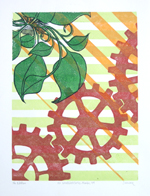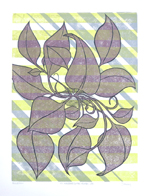The 101 Woodblock Series was created when acted on the knowledge that the only way that I was going to be satisfied with life is if I actually made art, something that I have known is important to me.
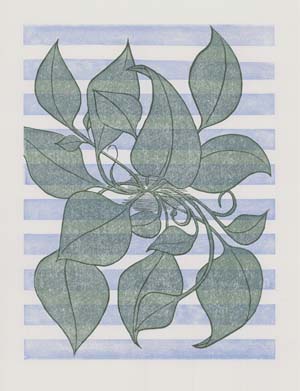
101 Woodblock Series - Number 1
For years, I let things like having a “real” job and working get in the way of creating art. I still have the job to pay the bills, but making art is what actually give me satisfaction.
They always say that you should follow your passions and do what you love to do, but after I finished up college and entered the workforce, that passion got put on the back burner.
It’s been sitting there for years, and I did my best to ignore it for a long, long time, but I finally got to it. I realized that I am not actually going to make anything in this world unless I, well, make something in this world.
I decided that the best way to get to it would be to create One-Hundred and One woodblock prints. Each would be different, and this project would slingshot me back into the habit of making art.
I do this because it feels right to do this.
I have finally felt, in the last few months since starting this project, like I am doing the right thing with my time, and with my life.
So what is the art about?
I like to combine plants and organic growth with graphic design shapes and mechanical stuff, like gears. The 101 Woodblock Series is largely about the designs and images that I can create by combining imagery of plants, flowers, gears, machinery, and abstract, graphic elements.
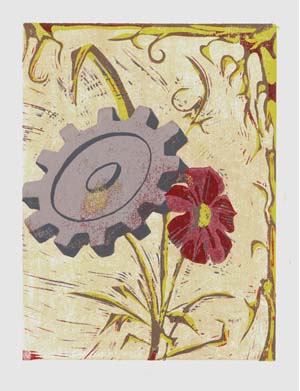
101 Woodblock Series - Number 3
In some ways, I think that the art is about a combination of peacefulness and diligence, peacefulness from the imagery that comes from nature, and the diligence of mechanical function. In some way, this imagery mirrors the creative process of printmaking, which combines artistic creativity with the craft and skill of the printing process.
What is a Woodblock Print anyway?
These prints are all made by the process called relief printing. Often blocks of wood are used to print from, but blocks of linoleum are also used (especially when your local art store doesn’t stock woodblocks).
The block starts out nice and flat, and certain portions are carved out of the block. When ink is rolled onto the carved block, the roller only touches the portions of the block that were uncarved.
The ink is rolled onto the block, then the block is pressed against paper to transfer the ink. Each color on the final print requires a separate block to print. This can be quite a few blocks per print!
A woodblock print requires both the art of creating an image, balancing the colors and making all of the artistic decisions that an artist might with a painting or a drawing, as well as the craft of printing. The blocks must be aligned, the color mixed correctly, applied to the block smoothly, and transferred to the paper evenly.

101 Woodblock Series - Number 15
Art Up For Grabs
The prints in this series are currently available to Insider Newsletter subscribers only. Insiders get the opportunity to purchase one of these prints for my costs to make and ship them. I’m only charging enough to cover my costs for the paper, ink, and blocks that are going in to making these prints, and for the cost to ship it to you.
This offer is only going to last until the series is done, and then the price for all of the prints in this series will increase. If you want to get a piece of hand-printed original art for about the cost of a sandwich and a soda (at least in Downtown San Francisco), click here and sign up for the Insider Newsletter.
UPDATE, 7 Feb 2010: This project is done. The low price is going to remain until mid to late February, then the price increases.
UPDATE, 22 Feb 2010: The promo time period is over, and these go to full price.
The Details
Each print is:
- Hand inked and printed on Rives BFK paper
- Completely unique. No two are exactly alike.
- paper size: approximately 11″x15″
- image size: 9″x12″
- Shipped in a large flat envelope between rigid cardboard
For more information about this series and how to add one of the series to your collection, sign up for the Insider Newsletter.
UPDATE, 18 Jul 2020: These aren’t really for sale anymore.
